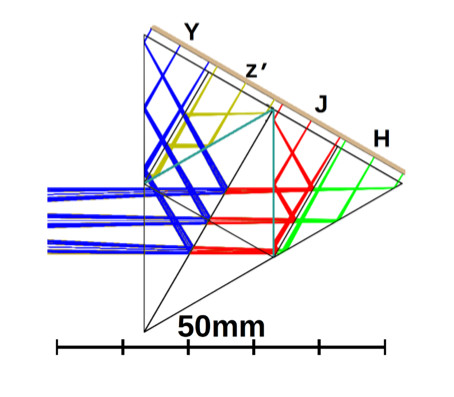Funding awarded for development of SkyHopper’s innovative camera
SkyHopper’s German CoInvestigators Sylvio Klose (TLS) and Jochen Greiner (MPE) have been awarded more than 1,200,000 AUD (780,000 EUR) to develop the technology at the base of a key component of SkyHopper’s camera that will allow to acquire images simultaneously in four colors.

The Kester prism dichroic is a novel concept for astronomical cameras, and it has been designed by optical engineers at MPE and TLS to allow SkyHopper to meet its science requirement of measuring the distance to Gamma Ray Burst (GRB) afterglows based on their infrared colors. Since GRB afterglows exhibit a strong variability, with the signal strength decaying rapidly over time, simultaneous imaging in multiple broad-band filters (“colors”) greatly improves the reliability of the photometric redshift measurement (which gives the distance to the afterglow). Acquiring all four colors simultaneously also boosts the efficiency of the observatory, since no photon collected will go unused, unlike when observations in a single filter are performed.
The Kester prism is actually a combination of four individual prisms, bonded together after high-tech polymeric coating is applied to their faces to achieve the desired combinations of transmission and reflections depending on the wavelength of the incident light. The funding will enable the construction of one demonstration model of the prism, that will then undergo extensive testing to ensure it can survive the harsh vibration, radiative and thermal environment during mission operations. In fact, during launch, the Kester prism may reach temperature in excess of 340 degree Kelvin (approximately 70 C) and be subject to significant vibrations. Then once SkyHopper is in orbit and its active cooling system is switched-on, the prism will drop to a freezing 150 degrees Kelvin (approximately -120 C).
We expect that the Kester prism will be ready in 2019, with initial thermal and vibration testing commencing shortly after delivery.
Note: This post was originally published in August 2017, and has been updated to reflect the award of additional funding for the Kester prism technology development.
Categories